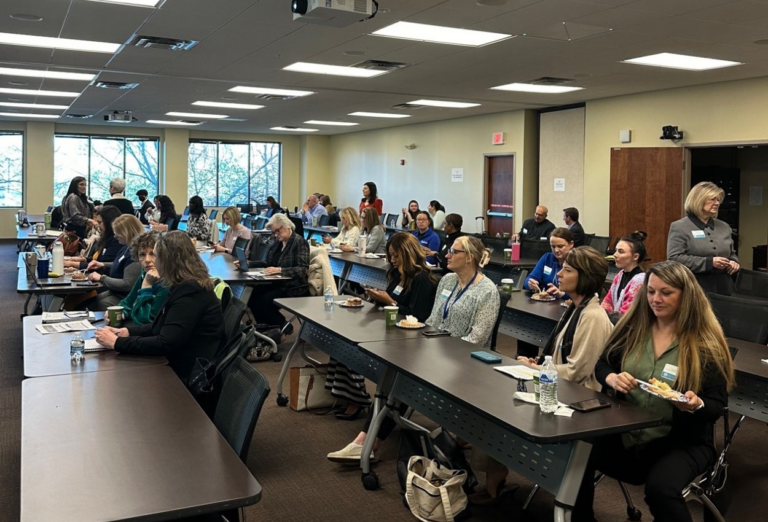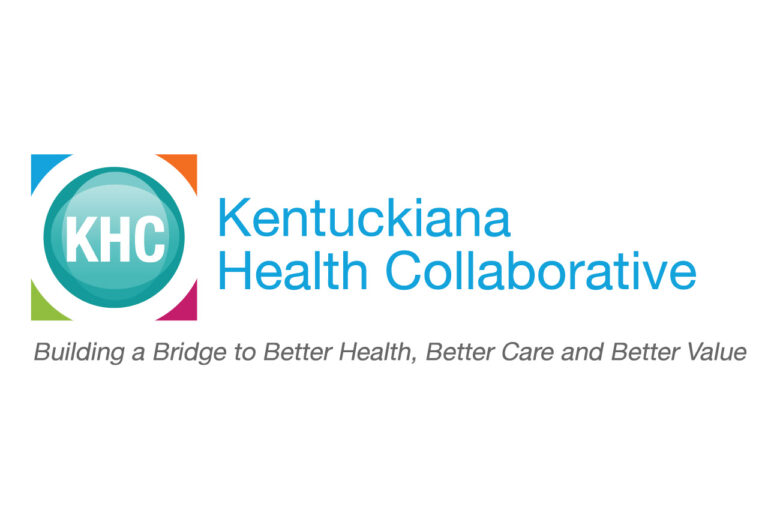At the peak of the opioid crisis in 2017, the Kentuckiana Health Collaborative identified substance use disorders and mental health as one of our top organizational priorities. Since then we have convened our community partners to develop several resources and educational opportunities to aid in addressing the crisis. Through this work, it became increasingly clear that as our national, state, and local communities have taken great strides in supporting from the prevention, treatment, and recovery from opioid misuse and opioid use disorders, there has been an increasing need to address the closely related issue of pain management. On April 22, stakeholders from across Kentuckiana came together virtually to explore the complex relationship between pain and opioids, opportunities and challenges for pain management in our current system, and what employers can do to begin driving improvement.
Striking a Balance
The relationship between pain and opioids is multifaceted and has been long developing. The implications of inappropriate opioid use are apparent; however, opioids are also an incredibly effective method of treating pain in some clinical situations. Travis Rieder, PhD, Director of the Master of Bioethics degree program and Research Scholar at the Johns Hopkins Berman Institute of Bioethics, kicked off the day’s conversation by exploring this dilemma through his own experience as a trauma patient. Rieder’s story highlighted the conflict between undertreating pain as a result of fear and overprescribing opioids when trying to relieve pain. In his presentation, Rieder followed the polarizing history that our country has had with opioids over the past century – ebbing and flowing between periods of widespread use, then addiction, then abstinence, all the while perpetuating the harmful stigma that surrounds the drug. By using our history as a lesson, Dr. Rieder advocated that now is the time to resolve our attitude towards opioids and find a balance between prohibition and liberal use.
Stories such as Dr. Rieder’s highlight how opioids can be a valuable tool in the pain management “toolbox,” although they should not always be considered a first-line option. Appropriate prescribing and tapering practices must be implemented, alongside a compassionate, patient-centered approach that considers the biological, psychological, and social factors that contribute to pain.
Transforming the System
To manage pain, an individualized, multidisciplinary, and multimodal approach is demonstrated to be the most effective. Despite this, its implementation is often challenged by cultural and systemic barriers. Amy Goldstein, Director of the Alliance to Advance Comprehensive, Integrative Pain Management (AACIPM), led a panel of local providers to explore the biopsychosocial model of pain and what is necessary to make individualized, multidisciplinary, and multimodal pain management a reality. Danesh Mazloomdoost, MD, Founder of Wellward Regenerative Medicine shared the biology of pain management. Larry Benz, President and CEO of Confluent Health, highlighted the functional outcomes of pain management and promising advance in pain neuroscience. Molly Rutherford, MD, MPH, FASAM, Founder, Bluegrass Family Wellness, PLLC, shared her experience as a primary care physician and member of the Pain Management Best Practices Inter-Agency Task Force. Collectively, these providers painted a picture of what pain management should look like and what needs to happen to bridge the gap.
At the national level, there is a movement geared towards making comprehensive, integrative pain management a reality, and several organizations have done so with demonstrated positive outcomes. At the symposium, Goldstein presented on the AACIPM movement, a multi-stakeholder collaborative including purchasers, public and private payers, providers, people with pain, researchers, government, federal medicine, policy experts, patient/and caregiver advocates, and more. The work focuses on connecting the dots in shared interest to improve access to quality, safe, evidence-based, individualized pain care that is oriented to the whole person. As part of AACIPM, Goldstein was joined by Kavitha Reddy, MD, FACEP, ABoIM and Christine Goertz, DC, PhD to share how their organizations have implemented this approach to pain care. Dr. Reddy, who serves as the Whole Health System Clinical Director at VA St. Louis Healthcare System and National Whole Health Champion, Veterans Health Administration, shared the VA’s whole health system model of care and the impact the transformational effort is making on Veterans in VHA. Dr. Goertz, a Professor of Musculoskeletal Research at Duke University School of Medicine shared a model for spine care across a continuum of services, ranging from evidence-based patient education to state-of-the-art surgical techniques.
Making the Employer Case
The morning was spent with a clinical focus and set the stage for the afternoon’s employer-focused discussion. Randa Deaton, President and CEO of the Kentuckiana Health Collaborative, introduced the role of employers as key healthcare stakeholders, emphasizing how employers can re-position themselves to leverage best practices and take action to reduce costs, eliminate inappropriate care, and improve health outcomes. Erin Peterson, MPH, Researcher at the Integrated Benefits Institute (IBI) supported the benefits of such approaches by sharing IBI’s research on the impact of employee health on business outcomes and strategies on how the two interests can be aligned. IBI’s research on opioids and pain revealed that opioid use, whether appropriate or inappropriate, is a large driver of employee absence. However, their findings also revealed that three out of five employees used opioids to treat pain without misusing them, underscoring the larger issue of pain management in the workforce. Peterson’s guidance for employers centered on leveraging partner expertise, raising workforce awareness, preventing opioid abuse, and ensuring employee access to substance use disorder treatment.
With a clear understanding of the employer role in addressing these issues and the business impact of not doing so, the conversation moved towards using claims data and benefit design as a way for employers to act. Last fall, the KHC partnered with IBM Watson Health to develop benchmarks for key metrics related to the prevention, treatment, and recovery of opioid misuse and opioid use disorder. IBM Watson Health derived these benchmarks from MarketScan, a fully integrated drug and medical claims database that includes more than 350 carriers and 25% of U.S employer-sponsored healthcare beneficiaries. At the Pain Symposium, IBM Watson Health team members Katherine Haverty, MS Pharmacology, and Norah Mulvaney-Day, PhD, presented an update to these key metrics, revealing trends in the data from 2016-2018 and top strategies for each stakeholder type to improve pain and substance abuse management.
Taking Next Steps
As part of an ongoing relationship with the Kentucky Opioid Response Effort (KORE), the Kentuckiana Health Collaborative has developed a number of new resources for employers to continue catalyzing the improvement of prevention, treatment, and recovery of opioid misuse and opioid use disorder as well as the treatment of acute and chronic pain.
The “Opioids and the Workplace” toolkit has been re-released in an online, interactive version and can be found here. Additionally, the toolkit has been updated to provide best practice data analytic and healthcare benefit design recommendations for employers in advancing comprehensive, integrative, pain management. With these updates, employers can first first and foremost learn the basics of pain and information on why do we experience pain, how pain should be treated, and why it isn’t being treated appropriately. Employers will also learn what medical and pharmacy analytics they can evaluate in order to better understand how pain is being addressed among their health plan members. The updated benefit design recommendations will guide employers on what pain management modalities should be included in their health plan, along with what design considerations employers should make when including them. Last but not least, the KHC has developed a data analytics worksheet for employers to utilize alongside toolkit’s data analytics recommendations. This worksheet allows employers to input their own data and compare it alongside both Kentucky and national benchmarks.
For more information on the Pain Symposium, including speaker presentations, click here. For more information on the KHC’s Opioids and the Workplace initiative, click here or contact nmiddaugh@khcollaborative.org.






